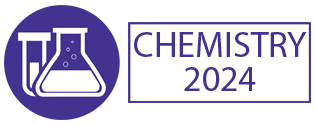Title : Screening of antimicrobial properties and bioactive compounds of pleurotus ostreatus extracts against staphylococcus aureus, escherichia coli, and neisseria gonorrhoeae
Abstract:
In recent years, the potential of pathogenic bacteria to acquire resistance to a variety of antimicrobial drugs has developed significantly due to the indiscriminate exposure of a number of antibiotic compounds. The purpose of this study is to determine the antibacterial capabilities and activities of crude Pleurotus ostreatus extracts against Staphylococcus aureus (ATCC 25923), Escherichia coli (ATCC 25922), Neisseria gonorrhoeae (ATCC 49926), and nine multidrug-resistant clinical isolates of Neisseria gonorrhoeae. All of these isolates exhibited sensitivity to azithromycin and ceftriaxone, while the majority of antibiotic resistance was seen against penicillin G, sulphonamide, and ciprofloxacin. Fifty percent of the isolates exhibited absolute resistance to both sulphonamide and ciprofloxacin, whereas 40% of the isolates displayed absolute resistance to penicillin G. The antibacterial activity of P. ostreatus extracts examined in this investigation varied within the same species of microorganisms. Extract B and D, extracted in the presence of 20% wheat bran bagasse and 20% maize flour bagasse, respectively, had exceptional antibacterial activity against all target isolates examined. We observed the lowest concentration of antibacterial agent required to inhibit the target bacteria to be between 1 × 10-3 mg/ml and 1 × 10-6 mg/ml with an estimated probability of 0.30769, a lower 95% confidence interval (CI) of 0.126807, an upper 95% CI of 0.576307, an estimated probability of 0.15385, a lower 95% CI of 0.043258, and an upper 95% CI, respectively. The MBC of 1 × 10-3 mg/ml was seen to eliminate 31% of the target bacteria. This dose was the most inhibitive. The antibacterial activity of all the extracts examined in the current study exhibited some degree of efficacy against both clinical isolates and standard strains. However, the majority of clinically isolated bacteria exhibited greater resistance to the extracts.
Audience Take-Away:
- Attendees will gain insight into the antimicrobial properties of Pleurotus ostreatus extracts, particularly in relation to their effectiveness against common pathogenic bacteria such as Staphylococcus aureus, Escherichia coli, and Neisseria gonorrhoeae.
- The presentation will elucidate the extraction methods that yield extracts with exceptional antibacterial activity against the target isolates. Specifically, attendees will learn about the efficacy of extracts obtained in the presence of 20% wheat bran bagasse and 20% maize flour bagasse.
- Quantification of antibacterial agent concentration: The presentation will provide information on the minimum concentration of antibacterial agents required to inhibit the target bacteria, with associated probability and confidence intervals. Attendees will gain insights into the dose-response relationship and the most inhibitive concentrations.
- The audience will learn about the variation in antibacterial efficacy between standard strains and multidrug-resistant clinical isolates. This comparison will highlight the potential challenges in treating clinical infections and the need for novel therapeutic approaches.
- This research provides valuable information on alternative antimicrobial agents derived from natural sources, which could aid in the development of new treatment strategies for drug-resistant bacterial infections.
- The findings offer insights into effective extraction methods and dosage requirements for Pleurotus ostreatus extracts, facilitating further investigation into their potential as antibacterial agents.
- Faculty members can incorporate this research into their teaching curriculum to educate students about the importance of exploring natural compounds for antimicrobial drug development and the challenges posed by antibiotic resistance.
Other Benefits:
- The study highlights the potential of Pleurotus ostreatus extracts as alternative antimicrobial agents, offering a sustainable and eco-friendly approach to addressing antibiotic resistance.
- By identifying effective extraction methods and minimum inhibitory concentrations, the research streamlines the screening of natural compounds for antibacterial activity, potentially reducing the time and resources required for drug development.
The comparison between standard strains and clinical isolates enhances our understanding of bacterial resistance patterns, contributing to the development of more targeted and effective therapeutic interventions.



